What Is Self Compact Concrete | What Is J-Ring Test | Equipment of J-ring Test | Procedure of the J-Ring Test
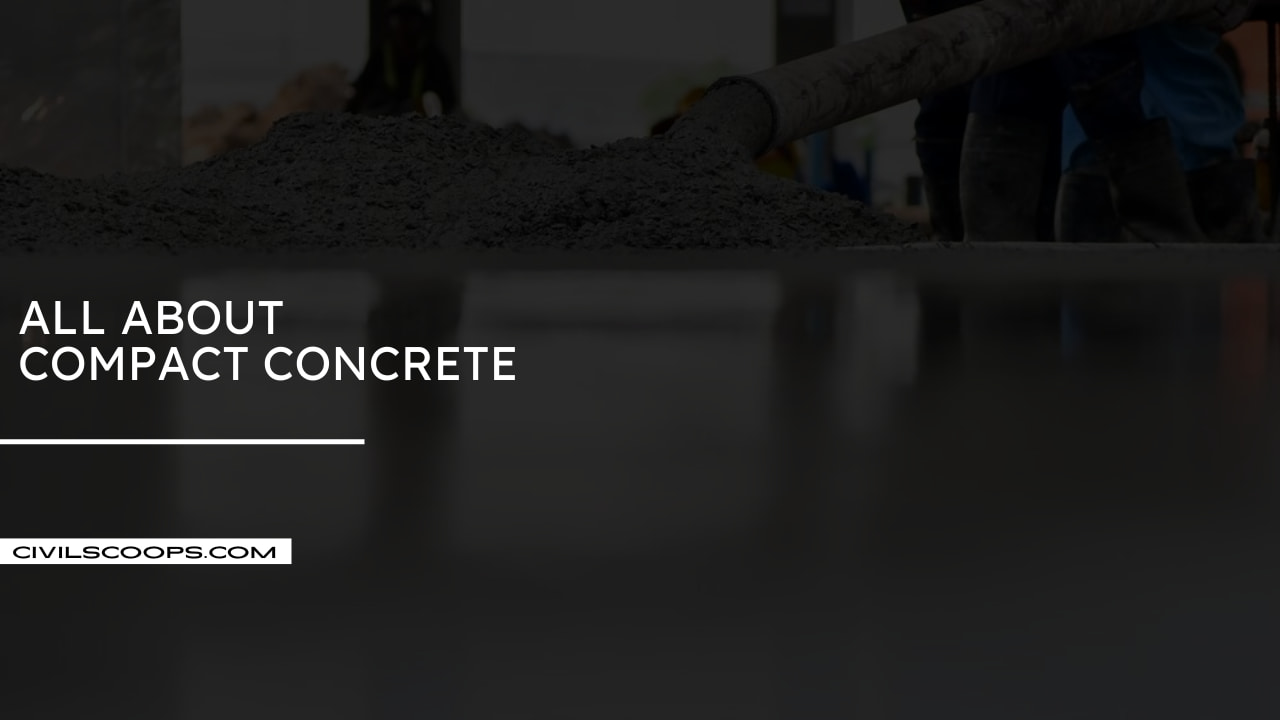
Table of Contents
What Is Self Compact Concrete?
Making concrete structures without vibration has been done in the past. For example, the placement of concrete under-water is done by the use of tremie without vibration. Shaft concrete and mass concrete may be successfully placed without vibration.
But the above examples of concrete are normally of lower strength and difficult to obtain consistent quality. Modern application of SCC (self-compacting concrete) is focussed on high performance, better and more reliable, and uniform quality.
List of Test Methods for Workability Properties of Self Compacting Concrete (SCC).
- Slump flow by Abrams cone.
- T50 cm Slump flow
- J-ring
- V-funnel
- V-funnel at T5 minutes
- L-box
- U-box
- Fill-box
- GTM Screen Stability Test
- Ouimet
In this article, we are discussion & Procedure Slump Flow Test
What Is J-ring Test?
J-ring test denotes the passing ability of the concrete. The equipment consists of a rectangular section of 30 mm x 25 mm open steel ring drilled vertically with holes to accept threaded sections of reinforcing bars 10 mm diameter 100 mm in length.
The bars and sections can be placed at different distances apart to simulate the congestion of reinforcement at the site. Generally, these sections are placed 3 x maximum size of aggregate.
The diameter of the ring formed by vertical sections is 300 mm and height 100 mm.
J-Ring Test
Here, the requirement of the instrument for J-Ring test are as follows.
-
Slump Cone
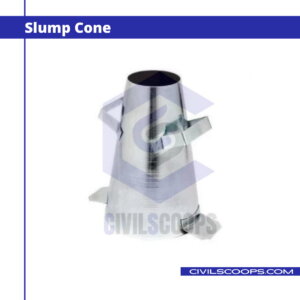
The usual slump cone having a base diameter of 200 mm, top dia. 100 mm, and height 300 mm are used.
-
Base Plate For J-ring Test

A stiff base plate square in shape is having at least a 700 mm side. Concentric circles are marked around the center point where the slump cone is to place. A firm circle is drawn at 500 mm diameter
-
J Ring For J-ring Test
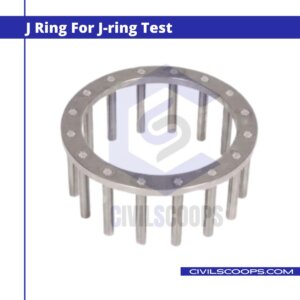
J-ring-rectangular section 30mm x 25mm planted vertically to form a ring 300 mm dia generally at a spacing of 48 ± 2mm
-
Trowel
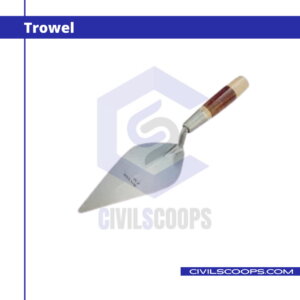
This tool is used to place cement mortar.
-
Scoop
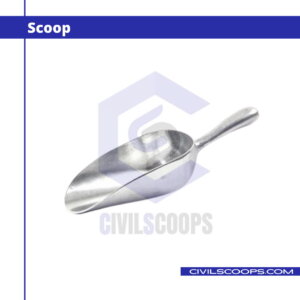
This use in QC department for the material.
-
Measuring tape
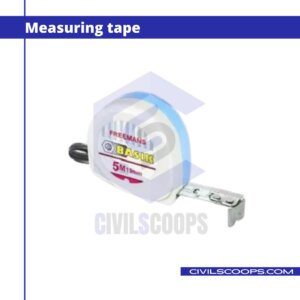
To measure the length.
Procedure of the J-Ring Test
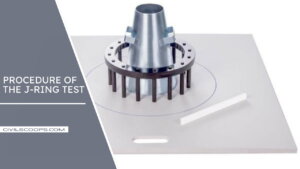
- About 6 liters of concrete is needed for the test.
- Moisten the inside of the slump cone and base plate.
- Place the J-Ring centrally on the base plate and the slump cone centrally inside the J-ring.
- Fill the slump cone with a scoop.
- Do not tamp. Simply strike off the concrete level with a trowel.
- Remove all surplus concrete.
- Raise the cone vertically and allow the concrete to flow out through the J-ring.
- Measure the final diameter in two perpendicular directions.
- Calculate the average diameter.
- Measure the difference in height between the concrete just inside J-Ring bars and just outside the J Ring bars.
- Calculate the average of the difference in height at four locations in mm.s.
- Note any border of mortar or cement paste without coarse aggregate at the edge of the concrete.
- The acceptable difference in height between inside and outside should be between 0 and 10 mm.
Calculations of J-Ring Post
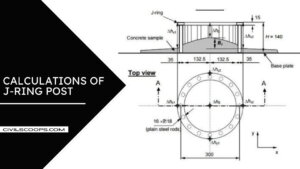
- The J-ring flow spread SJ is the average of diameters dmax and dperp, SJ is expressed in mm to the nearest 5 mm.
SJ = ( dmax + dperp) /2 = _________ mm
- The J-ring blocking step BJ is calculated as,
BJ = (Δhx1+ Δhx2+ Δhy3+ Δhy2) / 4 -Δh0
- Where Δhx1 and Δhx2 are height differences between the lower edge of the straight rod and the concrete surface in the x-direction.
- Δhy1 and Δhy2 are height differences between the lower edge of the straight rod and the concrete surface in the y-direction (perpendicular to x as shown in the figure).
- Δh0 is the height difference between the lower edge of the straight rod and the concrete surface at the central position.
BJ = ________ mm
- Calculate the difference between slump flow and J ring flow
Results of J-Ring Post
J-ring flow spread SJ of self compacting concrete = _________ mm
[su_note note_color=”#F2F2F2 ” text_color=”#333333″ radius=”3″ class=”” id=””]
Like this post? Share it with your friends!
Suggested Read –
- Septic Tanks Are Back In! Here’s What You Need to Know About How They Work
- What Is Granolithic Floors | Construction Method | Advantages аnd Disadvantage
- How is Concrete Made | What is Concrete | Components of Concrete | How to Mix Concrete
- Mivan Shuttering | Merit & Demerit Mivan Technology | Mivan Formwork Assembly Process
- Room Soundproofing | What Is Room Soundproofing | Cost to Soundproof a House | Fully Soundproof Room
[/su_note]
Originally posted 2022-06-28 19:16:04.
